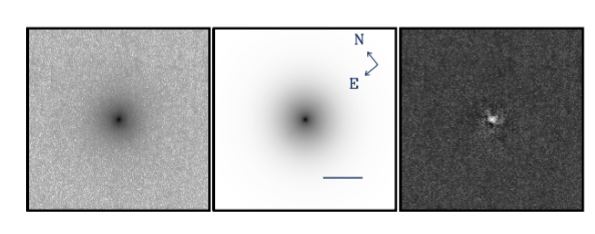Low-mass Black Holes and Their Host Galaxies
- Jiang et al., 2011, ApJ, 742, 68; 2011, ApJL, 737
- Dec 1, 2011
- 2 min read

In this project, we systematically study the structures and scaling relations of 147 host galaxies of low-mass black holes (BHs) based on Hubble Space Telescope observations. Our sample is selected to have central BHs with virial masses of ~10^5 - 10^6 solar mass. The host galaxies have total I-band magnitudes of −23.2 < M_I < −18.8 mag and bulge magnitudes of −22.9 < M_I < −16.1 mag.
Detailed bulge–disk–bar decompositions with GALFIT show that 93% of the galaxies have extended disks, 39% have bars, and 5% have no bulges at all at the limits of our observations. Based on the Sersic index and bulge-to-total ratio, we conclude that the majority of the galaxies with disks are likely to contain pseudobulges and very few of these low-mass BHs live in classical bulges. The fundamental plane of our sample is offset from classical bulges and ellipticals in a way that is consistent with the scaling relations of pseudobulges. The sample has smaller velocity dispersion at fixed luminosity in the Faber–Jackson plane compared with classical bulges and elliptical galaxies. The galaxies without disks are structurally more similar to spheroidals than to classical bulges according to their positions in the fundamental plane, especially the Faber–Jackson projection. Overall, we suggest that BHs with mass 10^6 solar mass live in galaxies that have evolved secularly over the majority of their history. A classical bulge is not a prerequisite to host a BH.
We show that the M_BH–L_bulge relation for the pseudobulges at low mass is significantly different from classical bulges with BH masses >10^7 solar mass. Specifically, bulges span a much wider range of bulge luminosity, and on average the luminosity is larger, at fixed M_BH. The trend holds both for the active galaxies from Bentz et al. and the inactive sample of Gultekin et al. and cannot be explained by differences in stellar populations, as it persists when we use dynamical bulge masses. Put another way, the ratio between bulge and BH mass is much larger than ∼1000 for our sample. This is consistent with recent suggestions that MBH does not scale with the pseudobulge luminosity. The low-mass scaling relations appear to flatten, consistent with predictions from Volonteri & Natarajan for massive seed BHs.









Comments